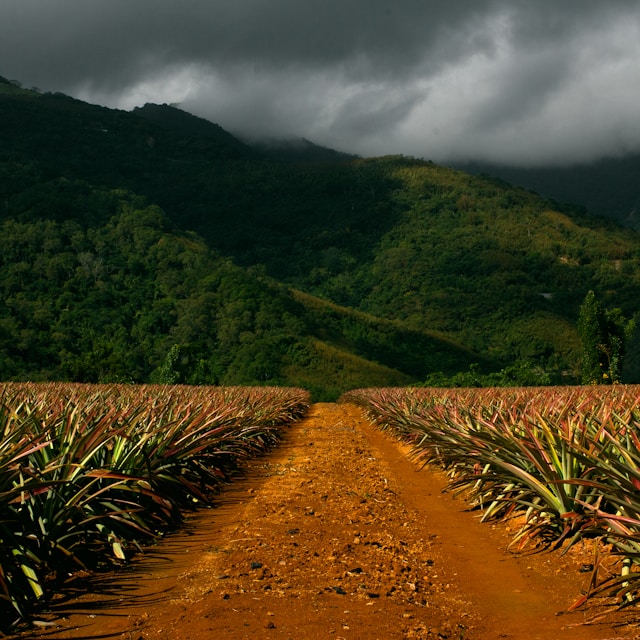Share
Climate Resilience in Tourism: How Island Nations Are Adapting

Climate change presents an existential challenge to island destinations worldwide. Rising sea levels, intensifying storms, coral bleaching, and changing precipitation patterns threaten not only tourism infrastructure but the very natural assets that attract visitors. At Leve Global, our work with vulnerable island nations has revealed innovative approaches to building climate resilience that transform these challenges into opportunities for sustainable tourism development.
The Vulnerability Paradox
Island nations face a profound paradox: their economies often depend heavily on tourism, yet the natural attractions that draw visitors—pristine beaches, vibrant coral reefs, lush rainforests—are increasingly vulnerable to climate impacts. This creates an urgent imperative to develop tourism models that can withstand climate shocks while preserving the ecological integrity that makes these destinations special.
Our work in Dominica following devastating hurricane impacts illustrates this challenge. The island’s tourism sector faced catastrophic damage, yet through the development of a Climate Resilient Tourism Policy and Master Plan, we helped transform this crisis into an opportunity to rebuild more sustainably.
Key Strategies for Climate Resilience in Tourism
- Embracing Climate Resilience as a Brand Differentiator
Forward-thinking island destinations are turning their climate adaptation efforts into compelling brand narratives. In Dominica, which markets itself as the “Nature Island,” we helped develop a tourism strategy that positions climate resilience as central to the visitor experience.
By showcasing resilient infrastructure, renewable energy initiatives, and conservation efforts, destinations can attract environmentally conscious travelers who value sustainability. This approach transforms necessary adaptation measures into marketable tourism assets.
- Diversifying Tourism Products Beyond Vulnerable Coastal Areas
Many island destinations have traditionally concentrated tourism development in coastal areas most vulnerable to sea-level rise and storm surge. Our work in the Caribbean has focused on developing inland attractions that reduce pressure on fragile coastal ecosystems while offering visitors diverse experiences.
In Saint Lucia, our “Wild South East Coast” Responsible Tourism Strategy created new tourism circuits that distribute visitor impacts more evenly across the island while providing economic opportunities for inland communities previously excluded from tourism benefits.
- Implementing Climate-Smart Infrastructure
Climate-resilient tourism requires rethinking infrastructure fundamentals. In our projects across the Caribbean, we’ve advocated for:
- Elevated structures that can withstand flooding
- Renewable energy systems that reduce carbon footprints while ensuring power continuity during disasters
- Water conservation and rainwater harvesting systems
- Natural infrastructure like mangrove restoration that provides both ecological benefits and storm protection
These investments not only reduce vulnerability but often enhance the visitor experience by showcasing innovative sustainability solutions.
- Developing Adaptive Management Systems
Climate resilience isn’t just about physical infrastructure—it requires flexible management systems that can respond to changing conditions. Our work in Tobago on climate adaptation included developing early warning systems, staff training programs, and adaptive tourism management plans that allow operators to pivot quickly when faced with climate disruptions.
This approach recognizes that resilience is as much about organizational capacity as physical structures.
- Creating Financial Resilience Mechanisms
Climate impacts can create severe financial shocks for tourism-dependent economies. Our strategies often include developing:
- Disaster risk financing instruments
- Tourism-specific insurance products
- Diversified revenue streams that can withstand seasonal disruptions
- Community benefit funds that ensure tourism revenues support local resilience efforts
These financial mechanisms help ensure that climate shocks don’t cascade into long-term economic crises.
Case Study: Dominica’s Climate Resilient Tourism Transformation
The Future of Climate Resilience in Tourism
As climate impacts intensify, the approaches pioneered by island nations like Dominica will become increasingly relevant to destinations worldwide. Several emerging trends will shape the future of climate resilience in tourism:
Regenerative Tourism Models
The most forward-thinking destinations are moving beyond resilience toward regeneration—developing tourism models that actively restore ecosystems and strengthen natural defenses against climate impacts.
Climate Justice Integration
Effective climate resilience strategies must address the disproportionate impacts of climate change on vulnerable communities. Future approaches will increasingly focus on ensuring that adaptation benefits are equitably distributed.
Technology-Enabled Resilience
From real-time monitoring systems to predictive analytics, emerging technologies will enhance destinations’ ability to anticipate and respond to climate impacts while providing visitors with information that helps them make sustainable choices.
Cross-Destination Collaboration
Climate resilience requires coordination across borders. Regional approaches like our work on the Caribbean Regional Sustainable Tourism Strategy demonstrate how shared challenges can catalyze collaborative solutions.
Conclusion
For island nations, climate resilience isn’t optional—it’s existential. Yet our work across multiple vulnerable destinations demonstrates that with visionary leadership and strategic planning, climate adaptation can become not just a defensive necessity but a catalyst for developing more sustainable, equitable, and compelling tourism experiences.
At Leve Global, we remain committed to helping destinations navigate the complex challenges of climate change while seizing the opportunities it presents for reimagining tourism in ways that elevate economies, empower communities, and protect the natural wonders that make travel transformative.
We would love to hear from you. Engage with us. Leave a comment below.
About the Author:
Kevon Wilson
Senior Analyst
Leve Global

Kevon Wilson, is a premier researcher and strategist. He has more than 16 years’ experience in research and digital marketing.
He is co-author of many of Leve Global’s research publications such as Big Data – Delivering the Big Picture to Drive Competitiveness, Everything You Need to Know About Internet Marketing, and The Top Ten Emerging Markets.
